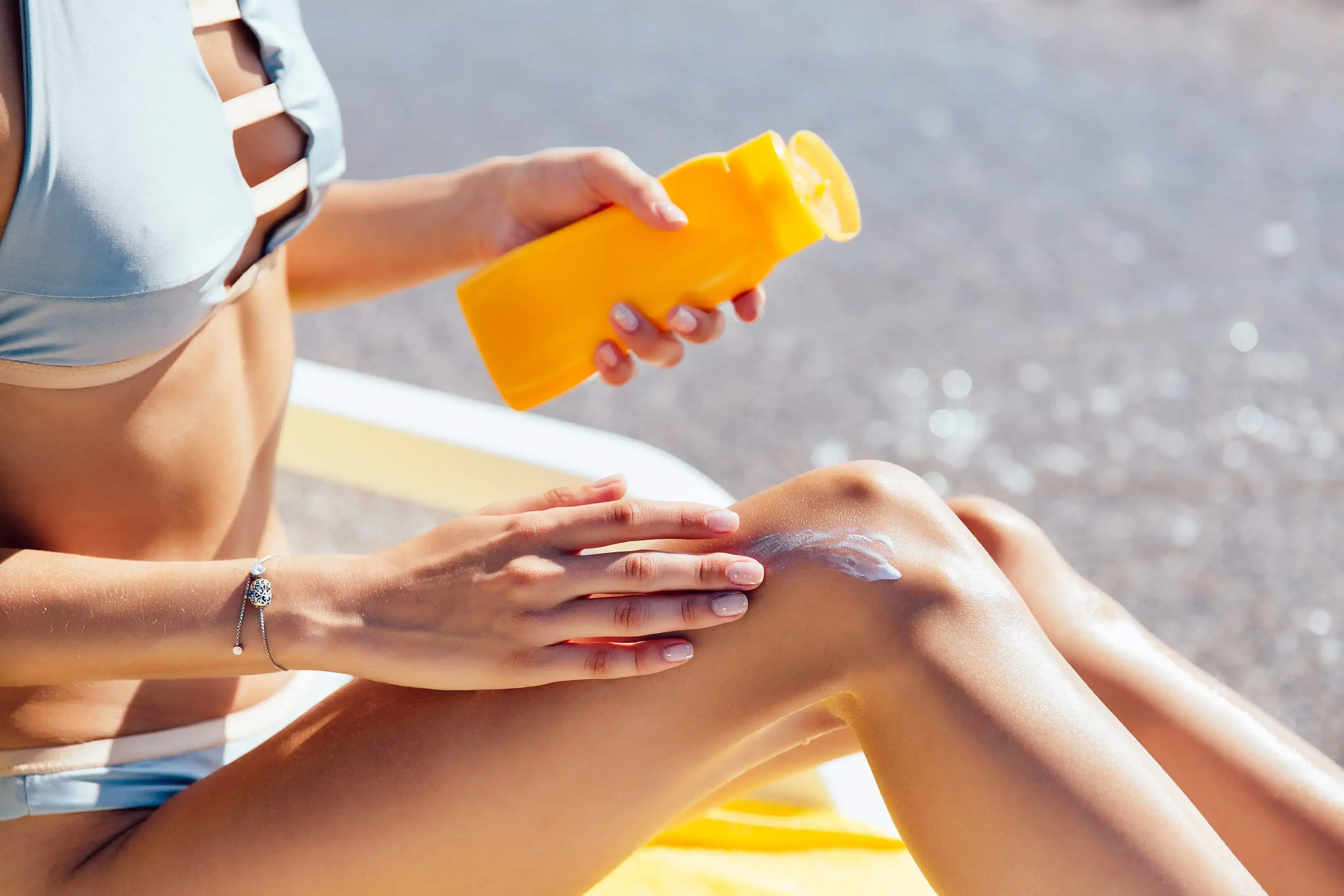Unmasking the Sun: The Hidden Dangers and Your Skin's Defense Plan

Basking in the warm glow of the sun is undeniably pleasurable, but have you ever wondered about the potential harm it may be causing to your skin? In this article, we'll delve into the reasons why the sun can be harmful and provide you with a step-by-step guide on how to protect your skin effectively.
The Dark Side of Sun Exposure
The sun emits ultraviolet (UV) rays, which are divided into UVA and UVB rays. While some exposure to sunlight is essential for our well-being, prolonged or unprotected exposure can lead to various skin issues. UVA rays penetrate deep into the skin, causing premature aging, while UVB rays are responsible for sunburns. Overexposure to both types can increase the risk of skin cancer.
UV Index Demystified:
The UV index is a numerical scale that indicates the strength of UV rays at a particular place and time. It typically ranges from 0 to 11 or more, with higher values representing greater UV intensity. Understanding the UV index can help you gauge the risk of sunburn and take appropriate precautions.
- Low (0-2): Low risk of harm. You can generally go about your activities without much concern, but it's still advisable to wear sunscreen.
- Moderate (3-5): Moderate risk. Take precautions, especially if you'll be outside for an extended period. Apply sunscreen, wear protective clothing, and seek shade as needed.
- High (6-7): High risk. Extra precautions are essential. Limit outdoor activities during peak sunlight hours, and use sunscreen, hats, and sunglasses.
- Very High (8-10): Very high risk. Minimize sun exposure, especially between 10 a.m. and 4 p.m. If outdoors, apply sunscreen generously, wear protective gear, and seek shade.
- Extreme (11+): Extreme risk. Take all precautions seriously. Avoid outdoor activities during peak hours, and if necessary to be outside, use maximum sun protection measures.
Sun Safety in Every Season:
Understanding the UV index is not limited to sunny summer days. Even on cloudy or overcast days, UV rays can penetrate clouds and cause sunburn. Additionally, snow, sand, and water can reflect and amplify UV rays, increasing the risk of sunburn during winter activities or beach outings.
Pro Tip: Make sun protection a year-round habit. Apply sunscreen with at least SPF 30 regardless of the season, and wear protective gear in snow-covered or reflective environments.
The Effects of Sun on Your Skin
Understanding the profound impact of sun exposure on your skin is not merely a matter of superficial concerns. It goes far beyond causing a temporary sunburn; the sun's rays can penetrate deep into your skin, wreaking havoc on its delicate structure and potentially leading to long-term consequences.
1. Premature Aging: Unveiling the Wrinkles and Fine Lines
As you bask in the sun's warmth, UVA rays sneak past the outermost layer of your skin, penetrating into the dermis. This leads to the breakdown of collagen and elastin fibers, proteins responsible for maintaining your skin's firmness and elasticity. The result? Premature aging becomes evident in the form of wrinkles, fine lines, and a loss of skin suppleness.
While the process is gradual, the cumulative effect of UVA exposure over the years can leave your skin appearing weathered and aged beyond its years. Imagine the sun as a silent clock, ticking away at the youthfulness of your skin with every unprotected moment under its rays.
2. Age Spots: The Unwanted Souvenirs of Sun Exposure
The development of age spots, also known as sunspots or liver spots, is another consequence of prolonged sun exposure. These dark, flat patches often appear on areas of the skin that have received the most sunlight, such as the face, hands, and shoulders. UV rays trigger an overproduction of melanin, the pigment responsible for skin color, leading to the formation of these unevenly pigmented spots.
Age spots not only contribute to an uneven skin tone but also serve as visible reminders of the sun's impact on your skin. They are a testament to the need for protective measures to maintain a more uniform complexion.
3. Loss of Skin Elasticity: A Sun-Induced Sag
The sun's UVB rays, in addition to causing sunburns, play a significant role in compromising your skin's elasticity. This occurs as the rays penetrate the epidermis and damage the collagen fibers, contributing to a breakdown in the skin's supportive structure.
Over time, this loss of elasticity can manifest as sagging skin, particularly in areas that are frequently exposed to the sun. The delicate skin on your face, neck, and décolletage is particularly susceptible to this effect. It emphasizes the importance of adopting a proactive approach to sun protection to preserve the firmness and resilience of your skin.
4. Increased Risk of Skin Cancer: A Harrowing Consequence
Perhaps the most alarming effect of prolonged sun exposure is the heightened risk of skin cancer. UV rays, both UVA and UVB, are known carcinogens that can damage the DNA in skin cells. This damage can lead to the development of cancerous cells and, if left unchecked, progress into potentially life-threatening conditions such as melanoma.
Skin cancer is a stark reminder that the consequences of sun exposure extend beyond aesthetics. It underscores the urgent need for protective measures to safeguard your skin and, ultimately, your overall health.
Step-by-Step Guide to Protect Your Skin
Now that we've explored the profound effects of sun exposure on your skin, it's imperative to equip ourselves with a robust defense strategy. Here, we present an in-depth step-by-step guide to shield your skin effectively from the sun's relentless assault.
Choose the Right Sunscreen
Selecting the right sunscreen is the foundational pillar of any effective sun protection regimen. Opt for a broad-spectrum sunscreen with an SPF of 30 or higher to ensure comprehensive defense against both UVA and UVB rays. Delve deeper into the world of sunscreens by examining ingredients like zinc oxide or titanium dioxide for physical protection, and consider water-resistant options for extended outdoor activities.
When it comes to application, the key lies in generosity. Apply sunscreen liberally to all exposed skin, ensuring no inch is left unprotected. Make it a ritual to reapply every two hours or more frequently if you've been swimming or sweating. This meticulous approach transforms sunscreen application into a ritual of self-care, enhancing its efficacy.
Seek Shade During Peak Hours
While it's tempting to soak up the sun at its zenith, it's crucial to be strategic about your outdoor activities. The sun's rays are most potent between 10 a.m. and 4 p.m., making it imperative to seek shade during these peak hours. This step isn't merely about avoiding discomfort; it's a strategic move to minimize direct sun exposure, allowing your skin to bask in the joy of the outdoors without enduring the full force of the sun's rays.
Wear Protective Clothing
Sun protection isn't limited to lotions and potions; your wardrobe can play a pivotal role. Embrace a sun-smart fashion sense by donning loose-fitting, long-sleeved shirts, and wide-brimmed hats. Not only does this elevate your style, but it also provides an additional physical barrier against harmful UV rays. Sunglasses with UVA and UVB protection further shield the delicate skin around your eyes, preventing premature aging and potential damage.
Stay Hydrated
Hydration is a cornerstone of skin health, especially in the face of sun exposure. Drinking ample water throughout the day ensures your skin stays hydrated from the inside out, promoting its resilience and ability to recover from sun exposure. Think of water as your skin's best friend, helping it combat the dehydrating effects of the sun and maintaining a radiant, supple complexion.
Regularly Check Your Skin
Engage in regular self-examinations to monitor any changes in your skin. This proactive step involves keeping a keen eye on existing moles and being vigilant about new developments. Should you notice any irregularities, consult a dermatologist promptly. Early detection is a powerful tool in the prevention and treatment of skin cancers, making this step an integral part of your sun protection routine.
Conclusion:
While the sun can be a source of joy, it's essential to be mindful of its potential harm to your skin. By following these simple yet effective steps, you can enjoy the outdoors while safeguarding your skin from the sun's adverse effects. Embrace a sun-smart lifestyle, and let your skin shine with health and vitality!


